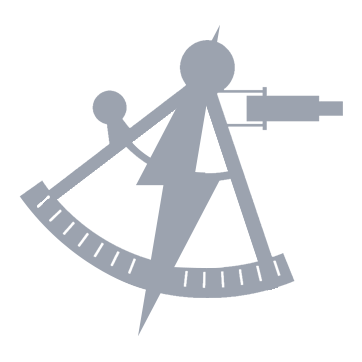Leander Nune’s Personal Log, Stardate 79126.8.
It wasn’t lost on the bridge crew that a distress call from a K’ritz starship was a unique opportunity to prove Starfleet’s friendship with the K’ritz Sovran. I could feel it. I could feel the collective swell of hope.
That hope was hubris.
The first contact team that came before us had learned so little about K’ritz technology. Warp propulsion physics was warp propulsion physics; that was an absolute we had in common. More than that, the first contact team had seen suggestions of the K’ritz being on a parallel development path to Starfleet. They believed the K’ritz’s current tech was comparable to our Excelsior-class starships of a century ago.
From the first moment I materialised aboard the starship Phravik, it became clear how little I knew. My away team was meant to beam directly to the bridge to assuage and counsel the starship’s captain, but we had clearly been transported into the engine room. That meant our away team of engineers had been beamed onto the bridge, or a mess hall, or the waste reclamation hub.
I was surrounded by command officers when the slight depolarisation that had been reported to us escalated into a warp core breach.
It was so alien and so familiar at the same time. The computer systems were screaming alarm klaxons in a lower register, and the air was sharp with a briny tang rather than the smell of burnt carbon. Still, Lieutenant Commander Nune could recognise a coolant leak with his eyes closed.
With his eyes open, Nune saw that the warp core was a massive conical hulk, easily twice the size of Constellation’s core. Like a tourist in a marketplace, Nune immediately set about orienting himself, seeking out the wares and baubles on display.
A couple of K’ritz engineers must have recognised the engineering kit in his hand or his critical gaze because they ushered him to something like a master systems display. Although they spoke over one another, their timbre remained measured while they swiftly explained how to interpret the computer readouts. The pressure and temperature within the reaction chamber was rocketing past the marked safety limits. More than that, Nune could see the alarm lights reflecting from the engineer’s glassy black eyes and the chitinous plates on the exposed skin of their faces. It might as well have been fear itself radiating from them in neon light.
Nune was about to make it worse.
“The matter and antimatter nozzles are misfiring,” Nune said aloud to confirm his understanding. One of the engineers nodded. “The stress it’s causing your dilithium articulation frame has caused an unstable matter-antimatter reaction. Now the energy routed to your warp nacelles is oscillating out of control beyond the critical pulse frequencies for warp operation.”
Another couple of engineers hustled Security Chief Ache and First Officer Calumn to where the matter/antimatter reaction assembly was leaking plumes of coolant. Nune tossed his engineering kit to them, and Calumn snatched it out of the air. Calumn’s eyebrows rose on his forehead in a questioning expression, but he never gave voice to that question. The peculiarities of Calumn’s paracortex meant Nune couldn’t sense what Calumn felt through his own Betazoid senses.
Using the override controls, Nune ramped up the field stabilisers within the dilithium chamber, applying gravitational forces to oppose the warp plasma system’s destabilisation. If he was studying the readouts correctly, the counter-gravitational field was having no immediate effect.
For a moment, the rest of the engine room had melted away. All that existed were the computer monitors and the schematics forming in his mind’s eye as his understanding of this warp engine grew. He sucked in a startled gasp when he heard someone screaming his name. Having crossed to the other side of the engine room, Ache was shouting to be heard over the klaxons and the whine of mounting pressure in the warp core.
“Lieutenant Pagaloa ended up on the bridge, commander,” Ache said, reporting what must have been a communique she just received. “He’s valved off the plasma injectors to the warp field coils, and the upstream fuel supplies are next.”
“It might be too late for that,” Nune shouted back. “The injector nozzles are already filled with matter pallets to last another ten minutes. You’re going to have to manipulate the dilithium regulators manually. If we can’t attune the power flow, the stress on the dilithium crystals will accelerate the energy fluctuations into a catastrophic failure!”
Calumn pulled tools from the engineering kit and asked, “How exactly do we trigger the dilithium regulators?”
“I don’t know yet, commander!” Nune admitted. “The automated controllers are fused, and I’m still teaching myself how this warp core even works.”
At that moment, I assumed we were all going to die.
Logically, it was the most probable outcome. Emotionally, I feared it; I wanted to beam back to the Constellation.
Despite how rational it was, I treated it like an intrusive thought. I took notice of it. I didn’t own the thought; it didn’t define me. Although I kept myself unattached to the thought, I tucked it away to analyse it later.
The first time later came, Flavia bought me a drink in the Planetarium lounge. She was all smiles and pats on the shoulders. She looked me right in the eyes and asked me why I had won. Her gaze was so intense that I thought she might be capable of scooping out my soul through my eyes. I had found myself inside an entirely alien engine for which I had no training. She wanted to know how I had saved the Phravik from destruction after the warp core had breached.
When I started to explain the physics, Flavia cut me off. She told me that it was boring. That was the same answer Commander Calumn had given her. She expected better of me, she said with a sneer.
I squinted at her. I made a point of downing the proffered drink in one go. I wanted to signal this was going to be a brief conversation.
Taes had warned me about Flavia, I told her. From their very first meeting, he’d heard that Flavia told Taes she was her science project. I understood that Flavia was studying how Taes had survived so much personal tragedy on the failed colony of her homeworld, and yet Taes kept winning. Flavia somehow thought she could extrapolate from the calculus of Taes’s wins to safeguard the Romulan Free State after the fall of Romulus.
Flavia said I was wrong. She said it was never about Taes. Flavia identified herself as an opportunist. If Starfleet had assigned her a different starship captain, she would have studied the captain in front of her.
Today, I was in front of her. Flavia asked me again how I won.
Stabbing his index finger through the air, Nune shouted to Calumn, “The gyromagnetic stabiliser. That one! That one in your left hand!” –The hiss and the whine of the coolant leak intensified, and so Nune got even louder– “I don’t think the K’ritz have invented those yet. The engineers will show you three articulation points for insertion. You need to stabilise the dilithium chamber’s harmonic matrix. It’s resonating at dangerous frequencies that can only obliterate the dilithium crystals.”
The K’ritz engineers were clearly experts in their own systems. However, they didn’t benefit from warp theory and mechanical engineering from the Federation’s more than one hundred member worlds. Still, they swiftly shepherded Calumn to the correct point on the warp reaction housing.
As Calumn jabbed the gyromagnetic stabiliser into the articulation point, he asked, “What’s the frequency I’m aiming for?”
“Ah, I have a couple of suspicions, but I don’t know,” Nune called back. However, he couldn’t give Calumn his full attention. More systems were spiralling into catastrophe, and his computer interface interventions were hardly picoseconds ahead of disaster.
Calumn attested, “Starfleet starships have phase-synchronisation software for this!”
“You’re right,” Nune said. “And K’ritz ships don’t. I’m sorry!”
“This is a science!” Calumn protested. “There has to be an equation to solve this.”
“We can’t have this fight again, Cal! Not in front of potential allies,” Nune shouted. “I’m resequencing the injectors over here. You know what to do. This is like your singing lessons all over again. Don’t overcomplicate it. You need to make the dilithium chamber good; sometimes good isn’t right. Sometimes good hurts. The imperfections are just as important as the harmonies. You have to feel your way there!”
“I believe you!” Calumn retorted. “Your argument is received. But how do I do any of that?”
“Sing at it, Cal,” Nune declared. “Sing!”
“At the warp core?” Calumn asked, far more incredulous than Nune had ever heard him.
“Mimic the sound of the warp core with your voice,” Nune said. “Use that as your starting point and harmonise with the song of the core.”
I joined Starfleet because it was the hardest puzzle I could think to solve.
I’ll give them that. Starfleet gave me what I wanted on that day. I had to learn that warp core mid-flight, even reassemble it without landing. I told Calumn he had to harmonise the warp core, even if it hurt.
Our mistake was stopping the power flow to and from the warp core. We needed that power. It was the missing piece. When you find something volatile and dangerous, you don’t extinguish that power. You share in its strength.
We’re Starfleet. We don’t run away in the face of failure. At least, that’s what we tell ourselves. When I quit engineering, I was running from failure. I was running from fear. After the way the blood dilithium in the delta quadrant manipulated my mind over a year ago, I couldn’t trust myself with life or death decisions anymore. I couldn’t lead an engine room anymore. It was too dangerous. This was too dangerous.
The trouble with running away from fear is that it gives you no distance from the fear.
If anything, the fear gets stronger. The fear chases faster.
Calumn and I stabilised the matter/antimatter reaction through our combined efforts. I solved the original cause of the warp core breach, but I hadn’t yet safed the overall system. The excess plasma still threatened the core beyond its pressure and thermal limits. I contacted Pagaloa and I ordered him to open the valves to the port power conduit.
Once it was free, I redistributed the overcharged plasma through a controlled overload to an auxiliary system—not just any auxiliary system; I used it to power the emergency annular confinement field generator to seal the warp core breach.
When the alarm klaxons shut down to signify safety, Nune hardly had time to breathe. He hardly had time to blink or think.
Calumn crashed into him and flung his arms around Nune, enfolding him in an embrace. Calumn’s hand cradled the side of Nune’s face, holding him close to his chest. Even if Nune couldn’t telepathically sense what Calumn was thinking, his other sensory inputs were clear. The impetuous strength of Calumn’s arms conveyed his great appreciation for Nune’s guidance and presence. The thrumming of Calumn’s heart beating in his chest vibrated against Nune’s chest, still thrilling at swerving away from the brink of death.
Then Calumn spun around, sweeping Nune off his feet. Time stopped for a single heartbeat in the weightless joy of escaping gravity. Despite how untethered Nune felt, he clung to Calumn. He held fast to that celebratory feeling and the firm shoulders in his grasp.
“I didn’t expect that to work,” Calumn said softly, despite his exuberant physicality. His expression was measured and oddly formal. “I expected to kill us all. Your singing lessons have done you proud, Nune. I never knew I could harmonise a dilithium chamber by ear.”
“You can’t,” Nune said.
And then Calumn dropped him back down to his feet.
“You didn’t,” Nune said. “I was disracting you so you would stop overthinking the problem. You needed to trust your emergency starship operations training.”
Nune slapped him on the chest. “Listening to your aria was a personal pleasure.”
I only joined Starfleet because it’s the impossible puzzle. It’s only worth doing if I’m guaranteed to fail, and I solve it anyway.
Why do I have to keep learning that about myself over and over again? I keep telling people I want a quiet life. I said it to Flavia three times. I keep telling myself I want to coast. I thought I wanted slow, incremental growth as a science officer.
I keep saying all that, then hurl myself into another bottomless pit.
I didn’t quit engineering because it would be safer in science or operations. I quit engineering because even the worst days weren’t raising my heart rate. It was getting too easy. I was coasting. I had nothing to preoccupy me, nothing to hold onto when the blood dilithium twisted my mind. The psychic resonance of the dead Brenari turned me into a tool of revenge against the Devore.
And now it’s later.
Today is later.
I can’t help thinking about that intrusive thought that we were all going to die.
It’s natural. It’s normal. It was only logical to assume we would all be killed by the destruction of the K’ritz warp core.
The intrusive thought was a picosecond of relief. I didn’t relish the thought of my life being over, but I felt relieved at my impending reunion. I felt relieved that I was going to be reunited with the spirits of the murdered Brenari, who spoke to me through the blood dilithium. I didn’t think of my own family members who were massacred during the Dominion War.
I thought of the Brenari—my ghosts of the blood dilithium.
Why would I think of them in my final moments?

 Bravo Fleet
Bravo Fleet






